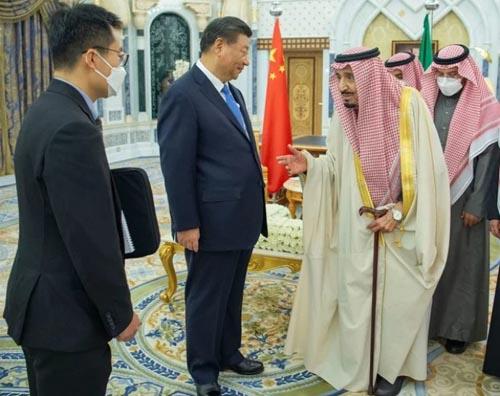
Cultural diplomacy can cement Saudi-Chinese relations
Maha Akeel
The significant Saudi-Chinese summit taking place in Riyadh this week indicates that the bilateral relationship between Saudi Arabia and China is solidifying and expanding in various sectors and on different levels, whether political, economic or social.
While the signing of trade and investment deals will capture headlines, the cultural exchange projects will cement ties between the two countries on the people-to-people level.
Relations between the two powerhouses go back more than 80 years, starting as simple trade relations and the Kingdom receiving Chinese pilgrims, some of whom seem to have settled, as Makkah has always been a welcoming melting pot for Muslims from across the world.
Relations became official in 1990, when the two countries established full diplomatic ties, exchanged ambassadors and high-level official visits, and organized meetings at the political, economic, cultural, youth, scientific and other levels. Today, these relations are growing as Saudi Arabia is keen to have a stronger strategic partnership with China based on mutual interests and respect.

A focus on trade and investment is natural in the building of any bilateral relationship, as it opens up opportunities for economic growth and social development. The famous Silk Road is historic and played a central role in facilitating economic, cultural, political and religious interactions between East and West.
Through this road to China, we fell in love with the silk textiles produced there, learned to savor Chinese food and tea, and appreciated the beauty of porcelain. Chinese markets, in return, absorbed Arabian perfumes, horses and camels.
Today, this road is a complex network of trade and investment routes revived as China’s Belt and Road Initiative, of which Saudi Arabia is an important part, offering opportunities for cooperation in new products and technologies, including digital and space.
With this increased cooperation in the financial and economic sectors, including tourism, the possibilities for cultural exchange are also being enhanced. In 2019, the Saudi Ministry of Culture announced the establishment of the Prince Mohammed bin Salman Award for Cultural Cooperation between Saudi Arabia and China, which is being officially launched during the current visit of President Xi Jinping to Riyadh.
The award aims to promote the Arabic language and arts, as well as mutual understanding between the two countries. Already quite a number of Saudi universities and schools offer classes in the Chinese language, while Arabic is taught in 44 Chinese universities and hundreds of Saudi university students are studying in China.
There are many opportunities for cooperation on exhibitions, exploration, cultural events, research and publications
These diverse forms of cooperation serve the joint objectives of Saudi Arabia’s Vision 2030 and China’s Belt and Road Initiative.
There are many facets to the cultural exchange between Saudi Arabia and China besides language, which is of course key to knowing and understanding each other’s culture.
Speaking the language will certainly break down many communication barriers, especially for tourists seeking to interact with the local people and explore the country. Although that should not be thought of as an insurmountable obstacle, as people always find a way to communicate.
China has a rich and ancient civilization. Arabs have, throughout history, been enamored by it and have considered China to be a destination for knowledge and wisdom. Through books, music, plays and artifacts, the treasure trove of Chinese history, art and science can be better understood.
Similarly, the diversity of the historical landscape and the magnificence of the religious standing of Saudi Arabia makes it an attractive destination for Chinese tourists and academics. Therefore, there are many opportunities for cooperation on exhibitions, exploration, cultural events, research and publications.
The youth is a key component in these new avenues for cooperation, especially in the arts and science. Encouraging more student exchanges and field visits to ancient and historical sites, as well as developing joint projects, would serve the interests of both countries.
Sport is also a common ground for bringing people together and presents a good way to engage locals in social activities. Then there is fashion, design, the visual arts, video games — the possibilities are endless.
Cultural diplomacy is a means to preserve traditions and promote cultural innovation. It aims not only to project and enhance the image of a country but also establish its soft power in the world arena. Both Saudi Arabia and China have been successful in doing this through cultural events and festivals and can learn from each other’s experiences and develop them.
The writer is a Saudi author based in Jeddah
